In the figure shown, friction force between the bend and the light string is mg4. Find the time in which the bead loose contact with the string after the system is released from rest.
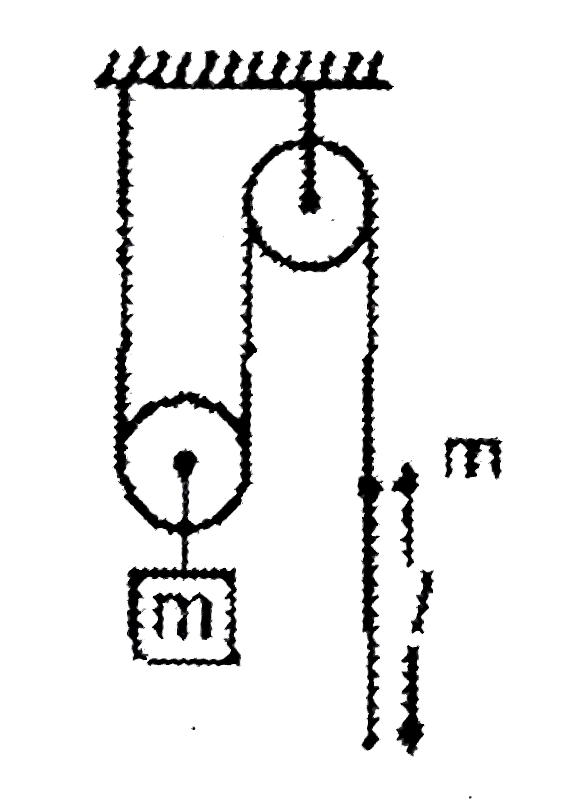
Step by step video & image solution for In the figure shown, friction force between the bend and the light string is (mg)/4. Find the time in which the bead loose contact with the string after the system is released from rest. by Physics experts to help you in doubts & scoring excellent marks in Class 11 exams.
Topper's Solved these Questions
- BOOK - ANURAG MISHRACHAPTER - FORCE ANALYSISEXERCISE - level 1103videos
FORCE ANALYSIS
- BOOK - ANURAG MISHRACHAPTER - FORCE ANALYSISEXERCISE - Level-273videos
FORCE ANALYSIS
- BOOK - ANURAG MISHRACHAPTER - FORCE ANALYSISEXERCISE - Matching type13videos
FORCE ANALYSIS
- BOOK - ANURAG MISHRACHAPTER - DESCRIPTION OF MOTIONEXERCISE - Level-334videos
DESCRIPTION OF MOTION
- BOOK - ANURAG MISHRACHAPTER - IMPULSE AND MOMENTUMEXERCISE - matching3videos
IMPULSE AND MOMENTUM
Similar Questions
In the fig shown below, friction force between the bead and the light string is mg4 if t=√nl7g where t is the time in which the bead loose contact with the string after the system is released from rest, find n
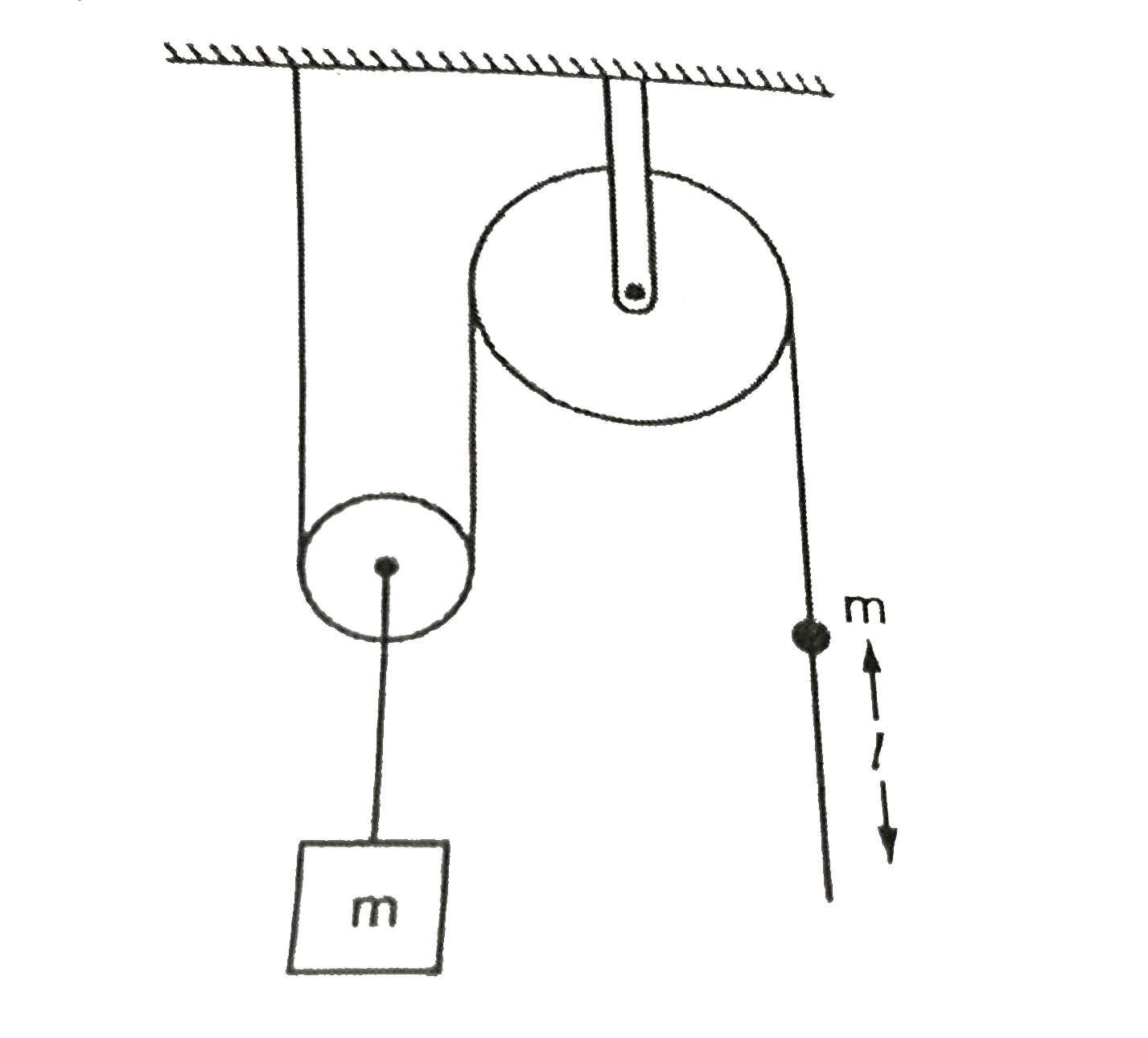 View Solution
View SolutionThe friction coefficient between the table and the block shown in figure is 0.2. Find the tension in the two strings.
 View Solution
View Solution
Knowledge Check
- Question 1 - Select One
In the figure shown, the frictional coefficient between the table and the block is 0.2. Find the ratio of tensions in the right and the left strings.
 A0.725B34:12C2:3D3:2
A0.725B34:12C2:3D3:2 - Question 2 - Select One
The friction coefficient between the plank and floor is μ. The man applies, the maximum possible force on the string and the system remains at rest. Then :
 Afriction force between plank and surface is 2μmg1+μBfrictional force on man is zeroCtension in the string is 2μmg1+μDnet force on man is zero
Afriction force between plank and surface is 2μmg1+μBfrictional force on man is zeroCtension in the string is 2μmg1+μDnet force on man is zero - Question 3 - Select One or More
An arrangement of the masses and pulleys is shown in the figure. Strings connecting masses A and B with pulley are horizontal and all pulleys and strings are light. Friction coefficient between the surface and the block B is 0.2 and between block A and B is 0.7. The system is released from rest. (use g=10m/s2)
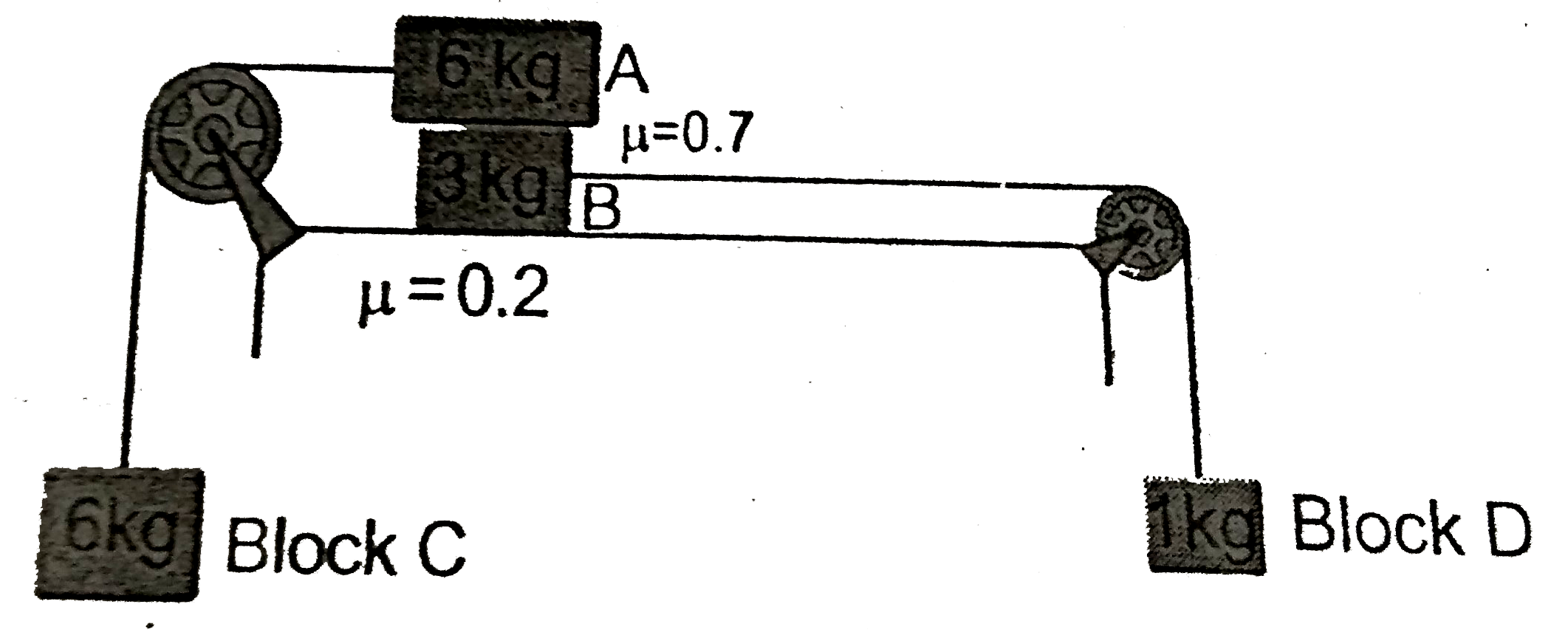 AThe magnitude of acceleration of the system is 2m/s2 and there is no slipping between block A and block B.BThe magnitude of friction force between block A and blockB is 42NCAcceleration of block C is 1m/s2 downwards.DTension in the string connecting block B and block D is 12N.
AThe magnitude of acceleration of the system is 2m/s2 and there is no slipping between block A and block B.BThe magnitude of friction force between block A and blockB is 42NCAcceleration of block C is 1m/s2 downwards.DTension in the string connecting block B and block D is 12N.
Block A of mass m and block B of mass 2m are placed on a fixed triangular wedge by means of a light and inextensible string and a frictionless pulley as shown in fig . The wedge is inclined at 45∘ to the horizontal on both sides . The coefficient of friction between the block Aand the wedge is 2/3 and that between the block B and the wedge is 1/3 .If the system of AandB is released from rest then find .
a. the acceleration of A
b. tension in the string
c.the magnitude and direction of the frictional force acting on A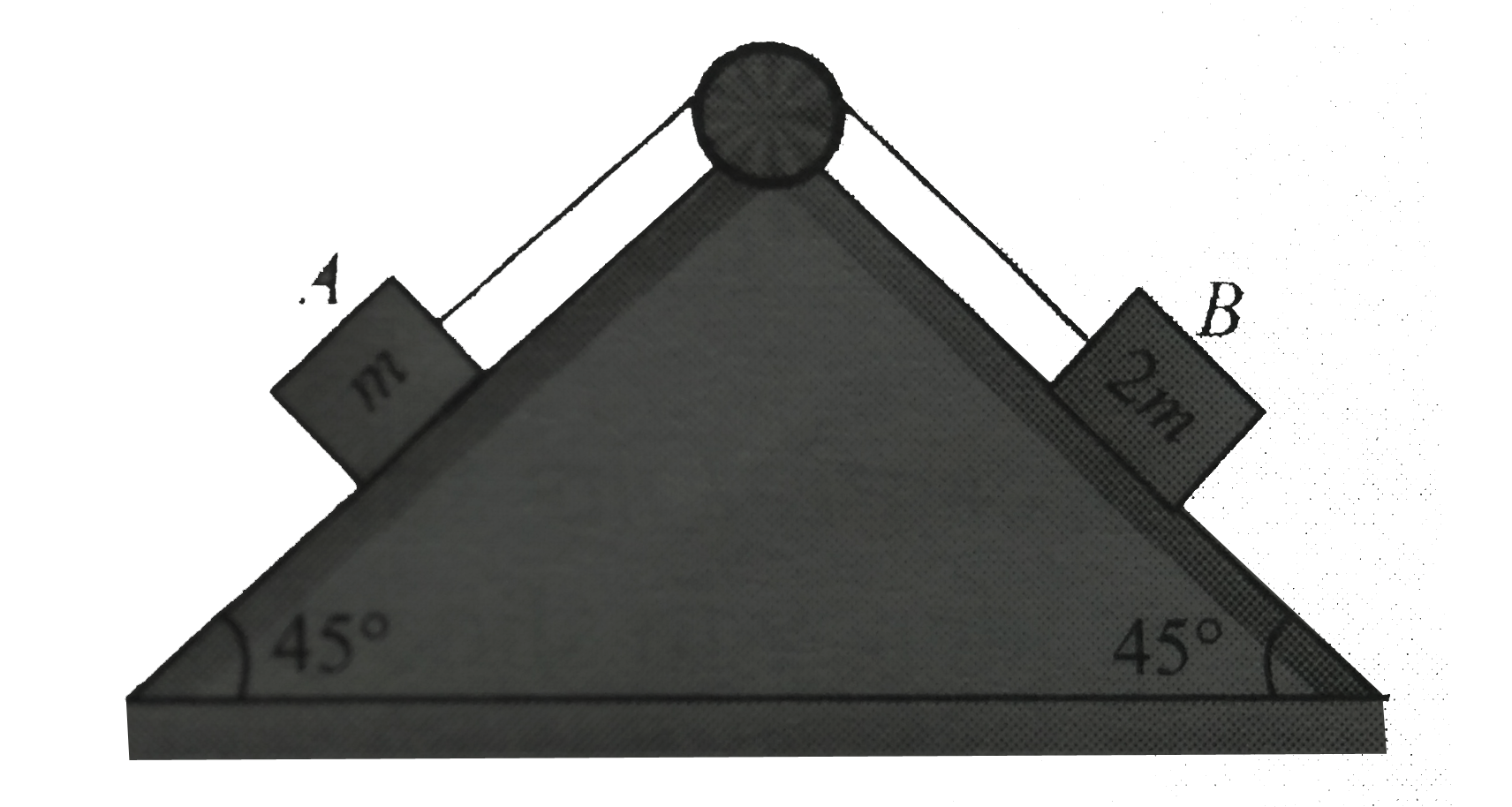 View Solution
View SolutionIn the system shown in the figure , a bead of mass m can slide on the string. There is friction beween the bead and the string. Block B has mass equal to twice that of the bead. The system is released from rest with lenth l=18.75m of the string hanging below the bead. Assuming the pulley and string to be massless. Find the distance (in meter) moved by the block B before the bead slips out of the thread.
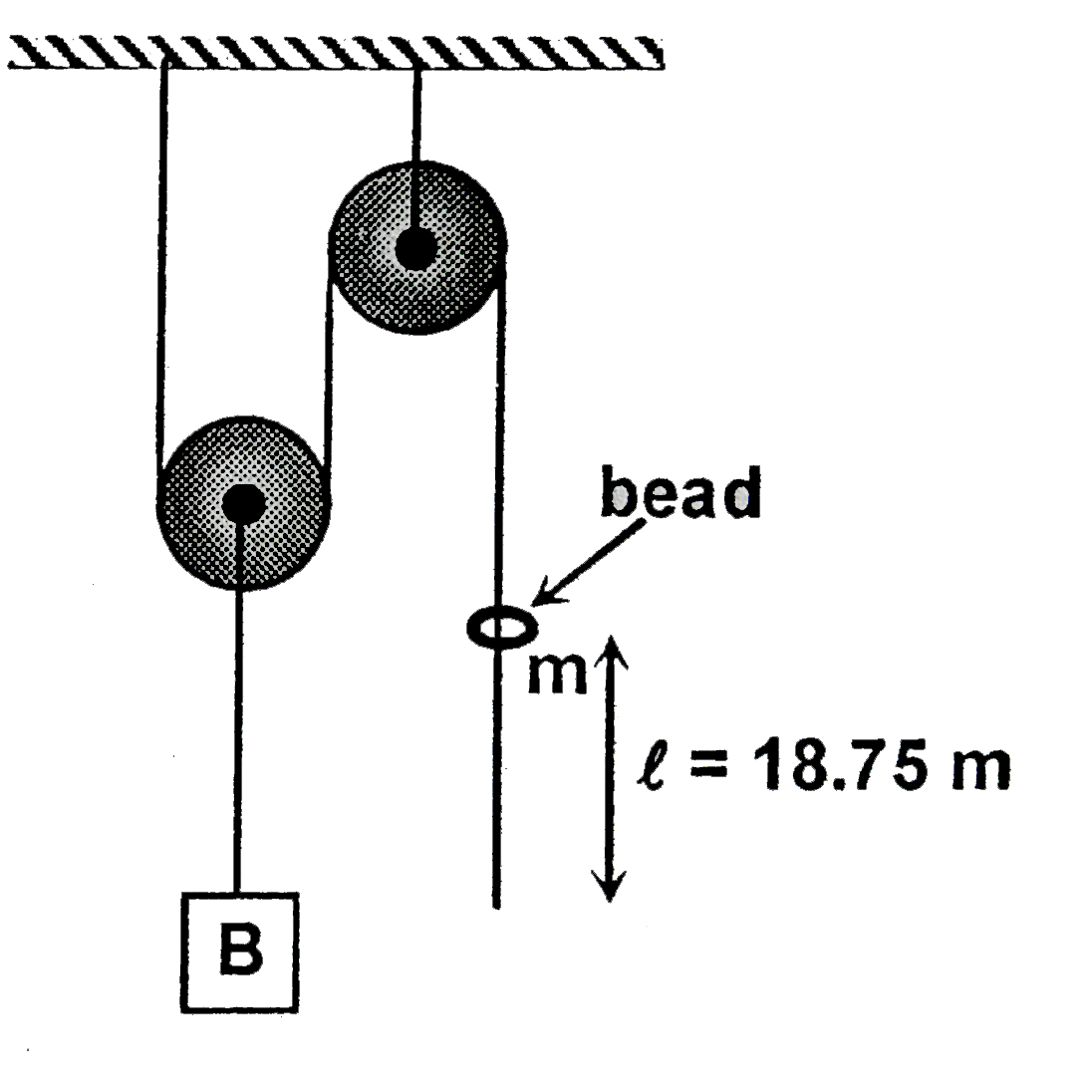 View Solution
View SolutionIn the system shown in the fig., the bead of mass m can slide on the string. There is friction between the bead and the string. Block has mass equal to twice that of the bead. The system is released from rest with length l of the string hanging below the bead. Calculate the distance moved by the block before the bead slips out of the thread. Assume the string and pulley to be massless.
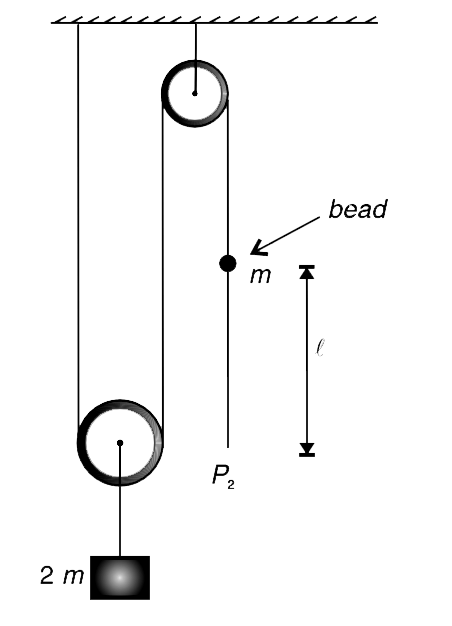 View Solution
View SolutionIn the system shown in the given figure, the inline is frictionless, the string is massless, and inextensible pulley is light and frictionless. The system is released from rest.
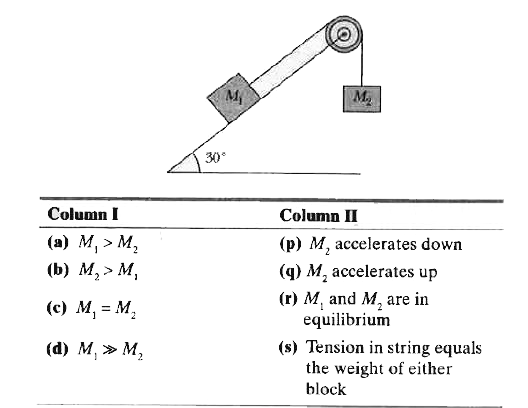 View Solution
View SolutionIn the arrangements shown in the figure there is friction only between the light string and the sharp spike at the point P. when the blocks are in motion, the tensions in the vertical and horizontal sections of the string are 4N and 3N respectively. The co-efficient of friction between the string and the spike is equal to
 View Solution
View Solution

